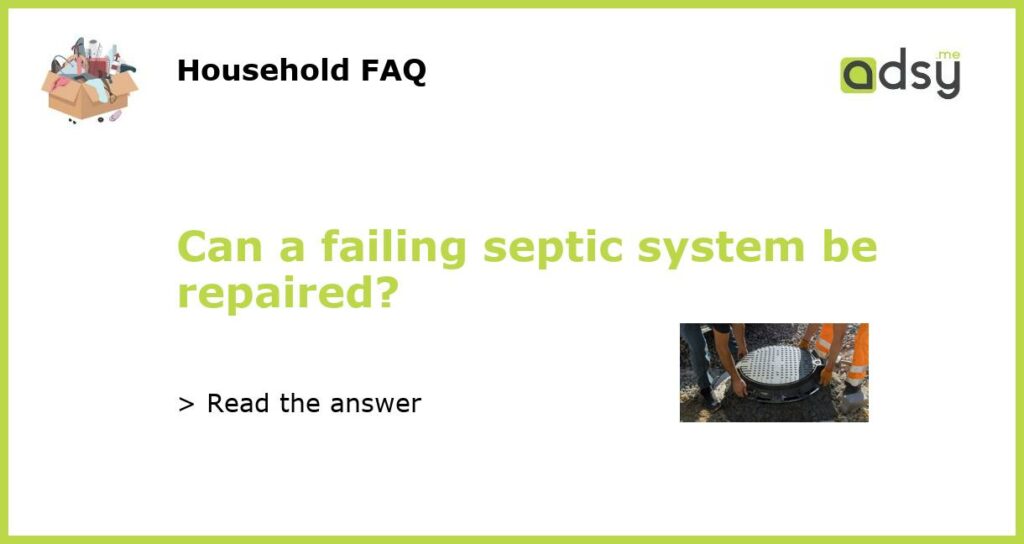Yes, a failing septic system can be repaired
A failing septic system can cause significant problems for homeowners. It can lead to unpleasant odors, sewage backups, and in some cases, potential damage to the environment. However, the good news is that a failing septic system can often be repaired, avoiding the need for a costly replacement. In this article, we will discuss the common causes of septic system failure, signs that indicate a failing system, and the repair options available.
Common causes of septic system failure
There are several reasons why a septic system can fail. Some of the most common causes include inadequate maintenance, overloading the system, and system design issues. Lack of regular maintenance can lead to the buildup of sludge and scum in the tank, causing it to become less efficient in treating wastewater. Overloading the system by using excessive water or flushing non-biodegradable items can also lead to system failure. In addition, if the septic system was not properly designed or installed, it may be more prone to failure.
Signs of a failing septic system
It is important for homeowners to be aware of the signs that indicate a failing septic system. Some common signs include slow-draining sinks and toilets, unusual gurgling sounds coming from the plumbing, sewage backups, and foul odors in the yard or inside the house. If you notice any of these signs, it is best to contact a professional septic system repair service as soon as possible to prevent further damage.
Repair options for failing septic systems
When it comes to repairing a failing septic system, there are several options available depending on the extent of the damage. One common repair method is septic tank pumping and cleaning. This involves removing the accumulated sludge and scum from the tank, allowing it to function properly again. In some cases, a septic tank additive may be recommended to help restore the balance of beneficial bacteria in the system.
In more severe cases, additional repairs may be necessary. This could involve repairing or replacing damaged pipes, repairing or replacing the drain field, or installing a new distribution box. The specific repair method will depend on the root cause of the septic system failure and the recommendations of a professional septic system repair service.
Preventing future septic system failures
Once a septic system has been repaired, it is important to take steps to prevent future failures. Regular maintenance is key to keeping a septic system in good working condition. This includes having the tank pumped and inspected every few years, being aware of what is being flushed down the toilet or put down the drains, and conserving water to avoid overloading the system. Additionally, it may be helpful to install risers on the septic tank, making it easier to access and inspect in the future.
In conclusion, a failing septic system can be repaired in many cases. It is important for homeowners to be aware of the signs of system failure and to contact a professional septic system repair service for assistance. With prompt repairs and ongoing maintenance, homeowners can avoid the need for a costly system replacement and ensure their septic system functions properly for years to come.

